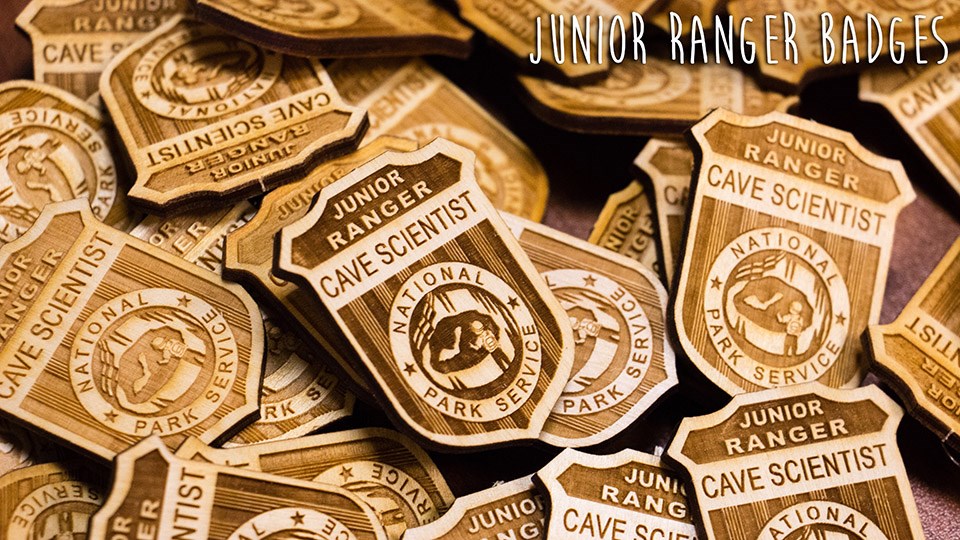Last updated: March 30, 2020
Article
#Sciencedeskdigs: Junior Ranger Badges

NPS Photo/M.Reed
I believe my job as an educator is important. To get people to care about and protect caves and karst, they first have to know what they are and how caves and karst affect them. People might not know what a karst landscape is even if they live on one! Karst landscapes form when acidic rainfall slowly dissolves bedrock like limestone. As this acidic water enters cracks and fissures, it dissolves out cave passages. Mammoth Cave National Park is a good place to see what a karst landscape looks like. You may not think this kind of landscape affects you, but in the U.S. 40% of the groundwater that we drink comes from karst aquifers—a body of carbonate rock that can store and transfer large amounts of clean, fresh water. So contamination within a karst landscape could mean potential contamination of the karst aquifer that you get your drinking water from.
The Junior Cave Scientist Program helps kids explore, learn, and protect the fascinating and fragile underground world of caves and karst. It’s a fun activity that can involve the whole family, and you get a cool badge, certificate, and the rank of Junior Cave Scientist when you complete the booklet! Download the book and learn more about the program on our Junior Cave Scientist Program webpage.
